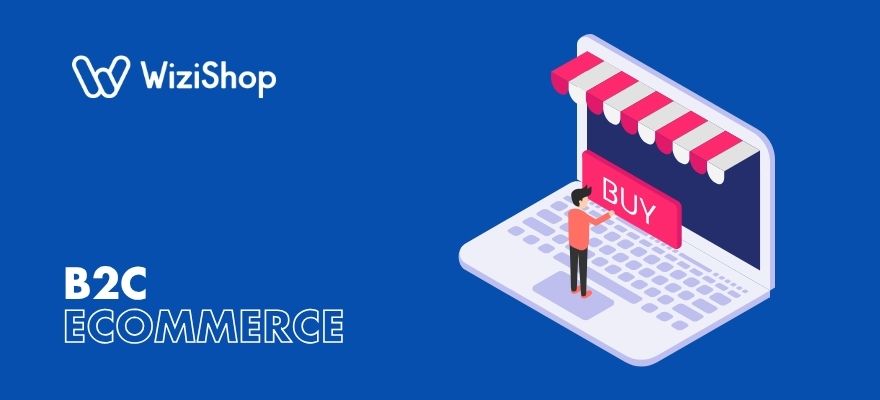In this article, you’ll discover the following:
- B2C ecommerce refers to direct sales between brands and end consumers.
- It differs from B2B in that it has short purchasing cycles and emotional decisions.
- The model is attractive for its simplicity, flexibility, and low launch cost.
- The worldwide market is growing strongly, with a significant weight in the United States.
- B2C brands focus on digital marketing and optimized customer journeys.
Buying a pair of sneakers online, ordering dinner via an app, or subscribing to a streaming service: all of these are examples of business-to-consumer (B2C) ecommerce.
In short, it’s online commerce between a company and an end consumer, without an intermediary.
This model is the same as traditional sales that we encounter every day: when we go to buy bread or when we go into a clothing store, except that here, everything is done online.
Fast, accessible, and highly customizable, digital B2C ticks all the boxes to appeal to consumers looking for speed and efficiency thanks to new technologies, as well as entrepreneurs seeking ever more precise levers to develop their brand.
In this article, we will take a closer look at this form of ecommerce that’s become indispensable: its definition, its differences from B2B, its key advantages, and the leading brands.
Whether you’re simply curious or ready to start selling online, let’s review the basics of this digital commerce sales system.
What is B2C ecommerce?
Definition
Business-to-consumer (B2C) ecommerce: Refers to all commercial transactions carried out between a company and an end consumer via digital media (website, social networks, mobile application).

In concrete terms, this includes your purchases on Amazon, your meal orders on Deliveroo, ordering a smartphone on the Samsung website, or even your Spotify subscription.
Each time, you interact directly with a brand or online service, without an intermediary.
This type of ecommerce is based on fast, optimized sales processes designed to offer a smooth, personalized experience.
B2C ecommerce sites invest heavily in user experience, sales promotion, content marketing, and after-sales services.
The goal is clear: capture attention, trigger purchases, and build customer loyalty.
But behind this apparent simplicity lies a sophisticated world: behavioral data analysis, marketing campaign automation, real-time logistics, inventory management, customer relationship management, and more.
B2C ecommerce requires optimizing your presence everywhere, all the time, beyond the boundaries of a physical sales space as local commerce may require.
Differences between B2C and B2B
While B2C is aimed at the general public, business-to-business (B2B) concerns commercial relationships between companies.
The distinction may seem obvious, but it has specific characteristics in terms of how an ecommerce site, marketing strategy, or even pricing policy is designed.
In B2C, you sell to individuals. Orders are often driven by a need or a trend. For example, a consumer might buy a pair of sneakers on Zalando after seeing an ad on Instagram or order a coffee maker on Darty after reading customer reviews.
In B2B ecommerce, you sell to professionals, and the process is more structured. A small and medium-sized enterprise (SME) that wants to buy furniture for its offices or a company that subscribes to management software such as Salesforce will have to compare offers, consult several contacts, negotiate, and sometimes wait to receive a customized quote.
These are more complex sales, with higher average cart values and a need for proof of reliability, performance, and return on investment.
Communication also differs: where B2C focuses on attraction and impulse buying, B2B values expertise, case studies, and the strength of the brand and services offered.
In summary, the two models are not opposed, but they respond to different logics linked to profoundly different targets.
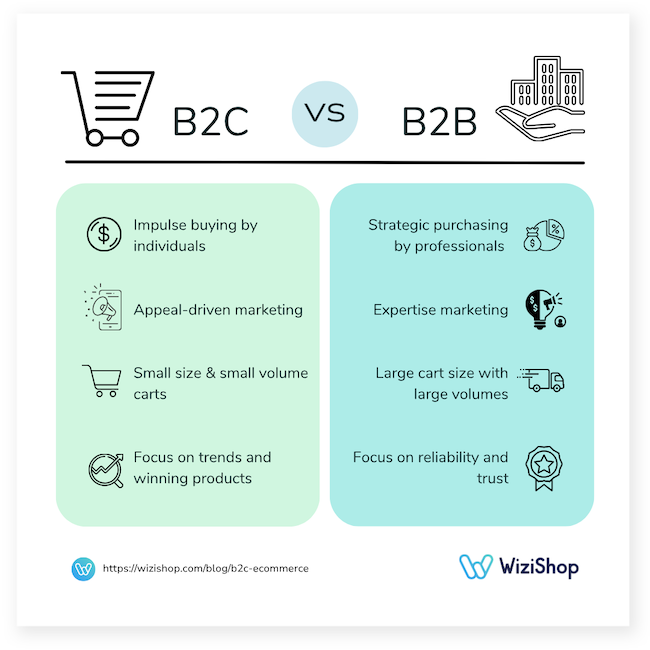
Different types of B2C ecommerce businesses
When it comes to B2C ecommerce businesses, there are several different types, each with different revenue streams, customer interactions, and operational strategies:
- Direct sellers: Businesses sell products, either their own or those of other brands, directly to consumers, with no intermediaries between business and customer. Examples of this model include retail stores and brand-owned ecommerce websites, such as Best Buy, Zara, Apple’s official store, and Nike.
- Online intermediaries: These are platforms that connect buyers and sellers without owning the goods. They help facilitate transactions between those who wish to buy and those who wish to sell, but they will also usually take a commission or listing fee. They’re also used for C2C ecommerce. A platform like Amazon, eBay, or Etsy would be a good example of this model.
- Advertising-based: Businesses provide free content or services and earn revenue from advertisements. Consumers are the audience, while advertisers are the real paying customers. This model is used by YouTube, many news websites, and social media platforms.
- Community-based: Companies build online communities and sell products or services to members or through targeted ads. This model relies on trust and shared interests within the community. Facebook groups and niche forums are good examples of community-based B2C.
- Fee-based: Consumers pay a one-time fee for products or services available via companies’ websites. There’s typically no ongoing relationship unless buyers renew. Think subscription-based entertainment platforms such as Amazon Prime and Netflix, software licenses, or sites selling movie tickets.
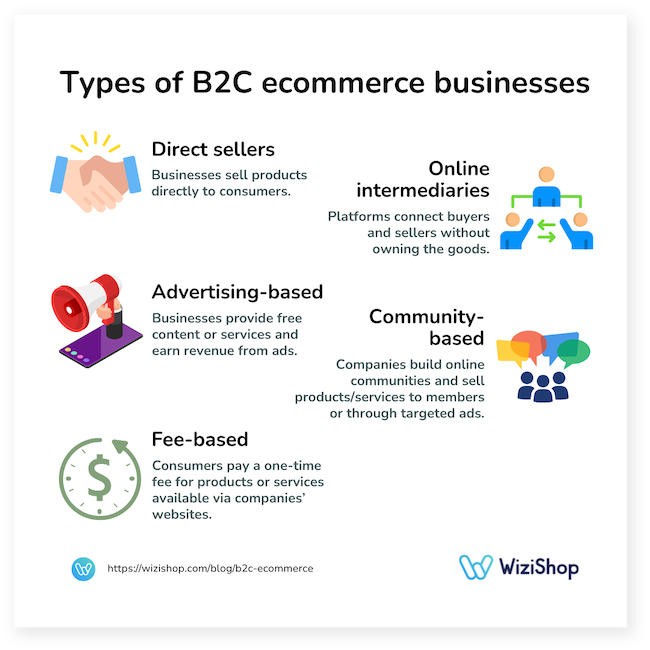
B2C ecommerce statistics
According to recent B2C ecommerce statistics, B2C ecommerce is doing very well.
With revenue of $6.55 trillion in 2024, global B2C ecommerce continues to break records, even in an economic climate shaken by inflation.
This represents an increase of approximately 14.8% over the previous year, proving that online shopping habits are well and truly established.
Today, more than 8 out of 10 U.S. consumers use the internet to make purchases, whether it’s for sneakers, organic pet food, or their latest home decor find.
In the United States, the B2C ecommerce market is predicted to experience a compound annual growth rate (CAGR) of 15.5% from 2024 to 2030.
In other words, the internet is no longer just a sales channel: it’s a major economic pillar, and B2C ecommerce plays a major role in this!
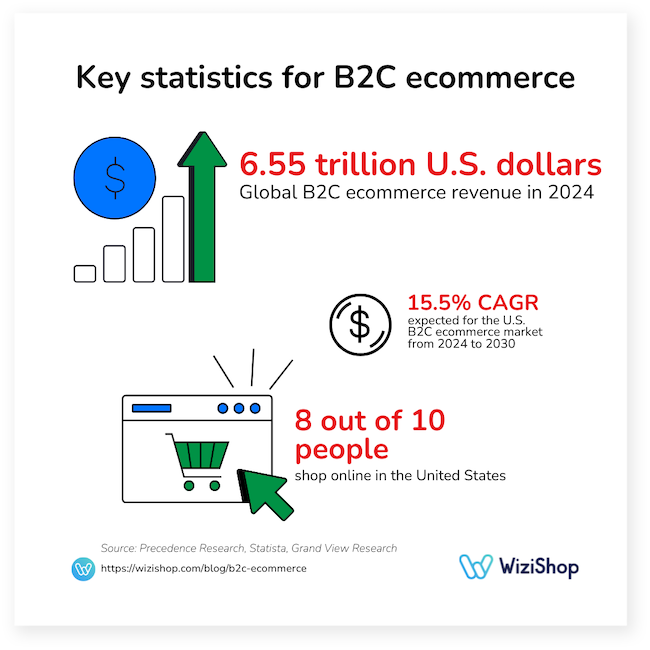
B2C ecommerce advantages and examples
B2C ecommerce allows you to create a direct relationship with the end customer, while leveraging powerful marketing tools and offering great flexibility.
Here are the main advantages of ecommerce to consider if you are thinking of launching or developing a B2C website.
1. Direct access to consumers
One of the major advantages of B2C is the direct relationship with the end customer. There’s no longer any need for intermediaries: the business has complete control over its message, positioning, and user experience.
This proximity allows you to quickly adjust your offerings, respond to expectations in real time, and build a significant community around your products.
Example: A business like LEGO relies on its community with its LEGO Ideas program to co-create its products and vote for potential product offerings. This type of B2C ecommerce retailer allows consumers to become involved in the design of its collections in order to always meet their requirements.
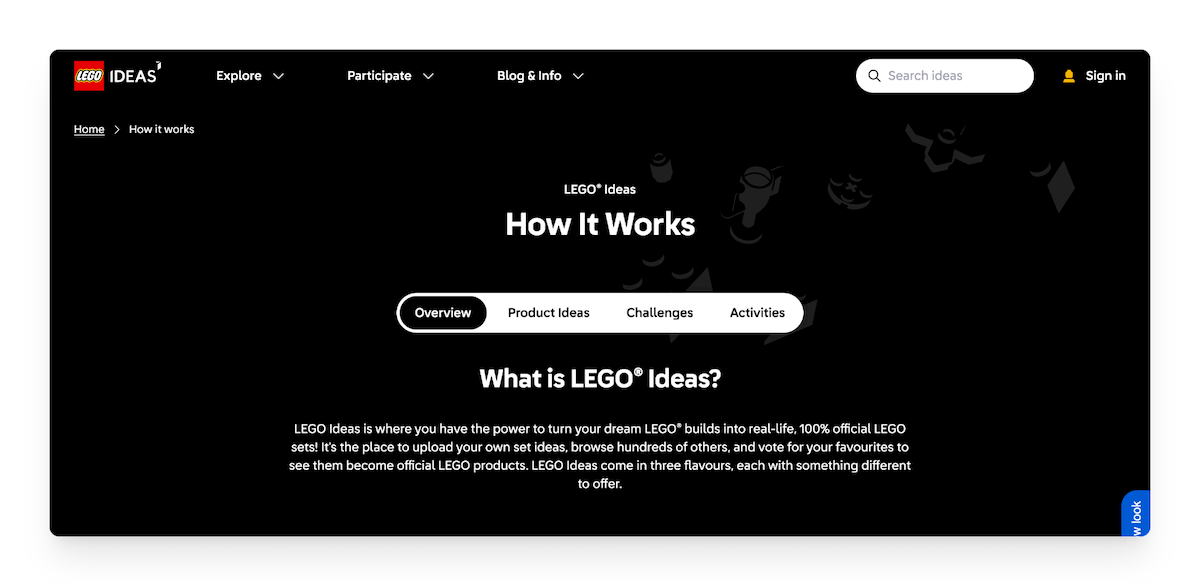
2. Faster consumer purchasing decisions
In B2C, the sales cycle is generally short. Customers can make a purchase in just a few clicks, often prompted by an offer, an advertisement, or an immediate need.
This allows companies to generate revenue quickly, without having to wait for lengthy approval processes as in B2B.
Example: On platforms such as Shein or Temu, purchasing decisions are made in a matter of minutes, often driven by the urgency of current offers or the promise of receiving a trendy product at a low price before stocks run out.
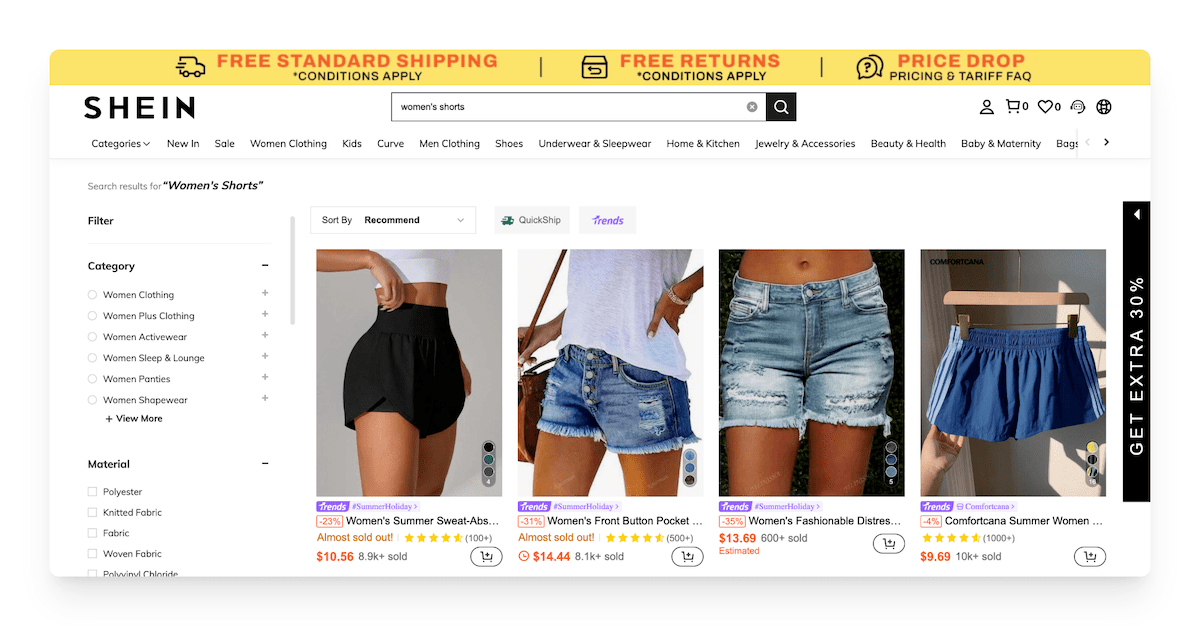
3. Potentially higher sales volumes
The B2C market targets millions of consumers, opening the door to massive sales, especially if the product meets a broad and well-identified need.
Brands can quickly grow their business by leveraging digital technology, influencer marketing, and online advertising.
Example: Low prices + a viral content strategy = massive success. Merci Handy has understood this perfectly, appealing to a young target audience with affordable products and well-crafted communication around fun hygiene products that everyone wants to use every day.
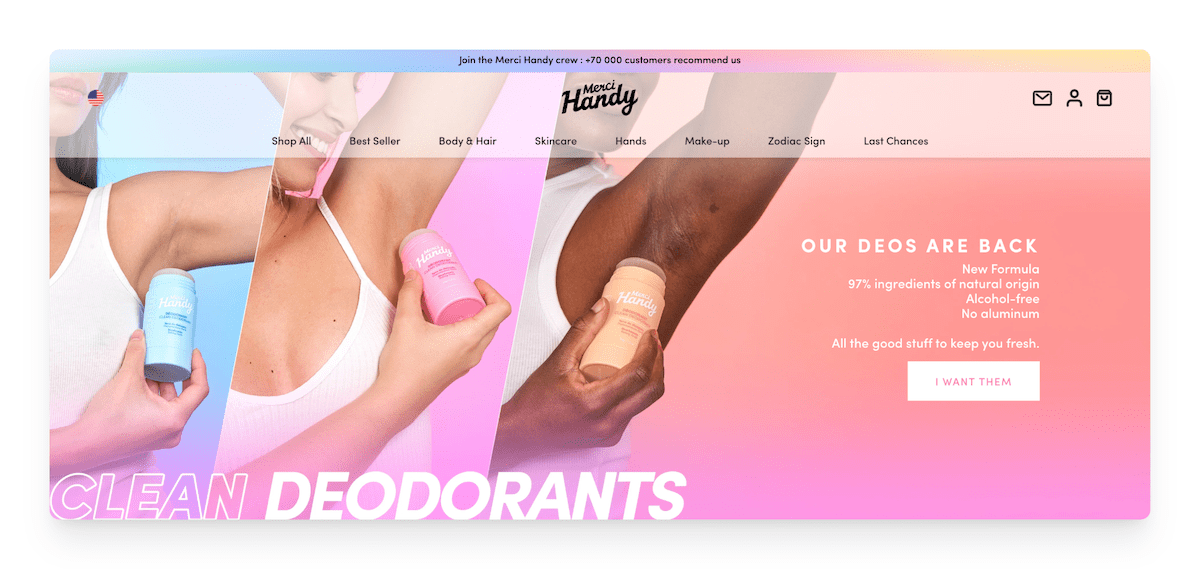
4. A stronger emotional connection with consumers
B2C allows you to work on your brand image in a creative and impactful way using various strategies to appeal to buyers. You can tell a story, embody values, and offer a unique experience.
It’s a powerful lever to help you stand out in a competitive market and generate loyalty.
Example: Patagonia doesn’t just sell products; it sells a lifestyle and a committed, responsible vision that resonates with its audience’s expectations, creating an ecosystem around the company’s products rather than just a website for emotionless transactions.
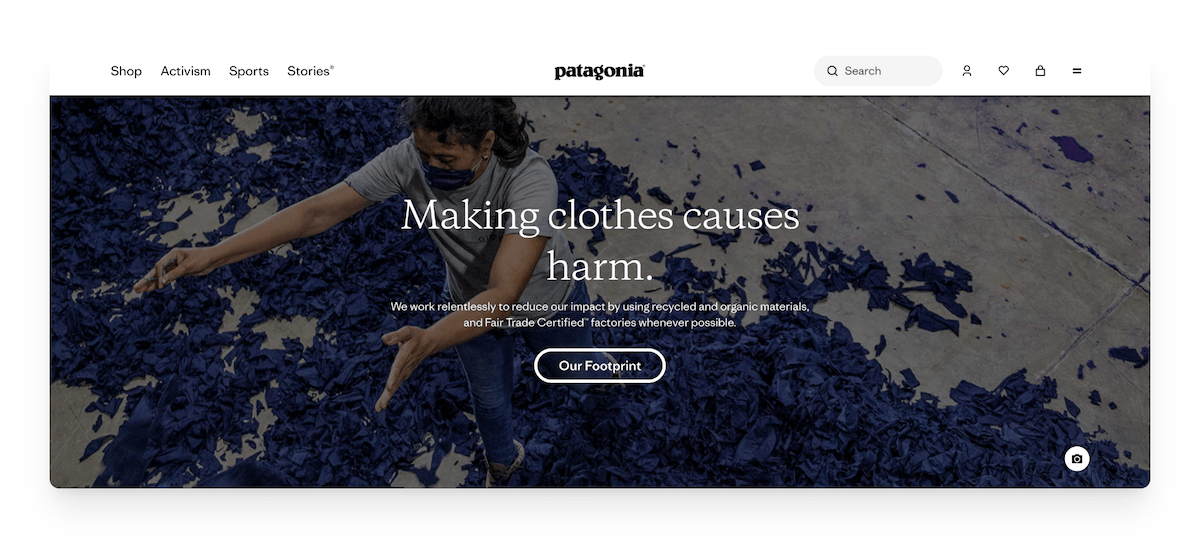
5. More varied and accessible marketing tools
B2C companies rely on a wide range of digital tools:
- social media,
- email campaigns,
- search engine optimization,
- marketing automation,
- retargeting,
- etc.
These tools are now widely accessible, even for small businesses, thanks to automation solutions available to all and technological tools that will be able to help with the development of online sales machines.
Example: Warby Parker is an eyewear brand that perfectly illustrates the power of B2C ecommerce when supported by a well-oiled multichannel marketing strategy. Online sales with virtual try-ons, physical stores to reassure customers, influencer campaigns on Instagram and TikTok... the business uses every lever to capture attention and convert across all channels.
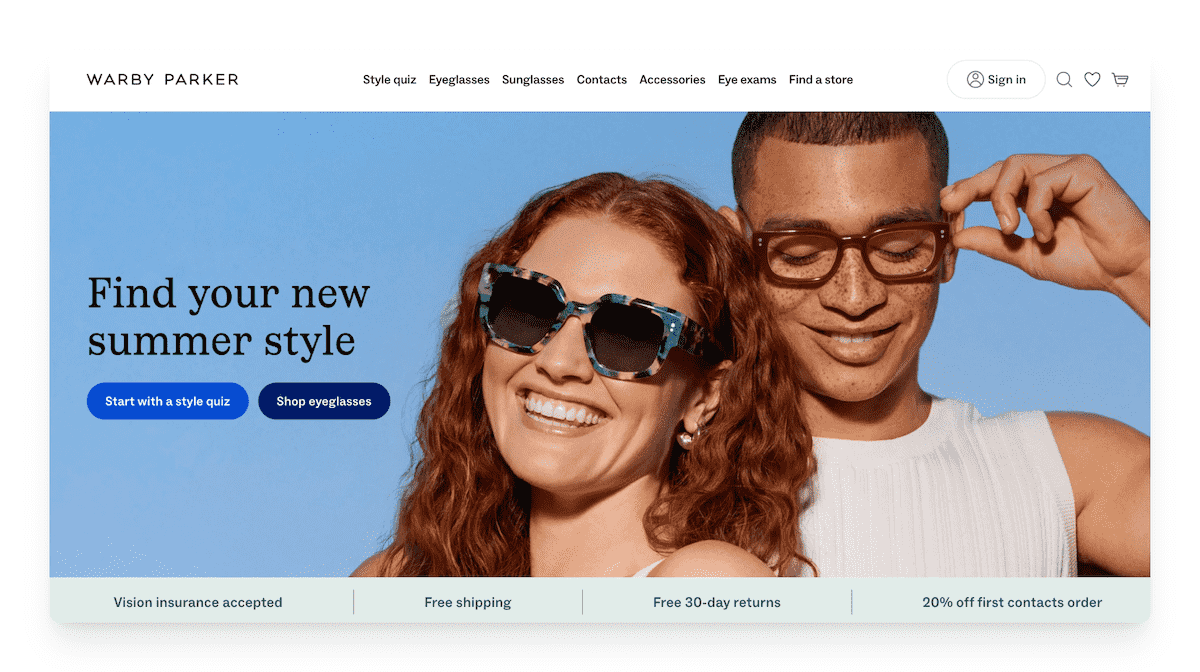
6. Valuable commercial agility
The B2C model features great flexibility: you can test limited edition products, adjust prices, launch seasonal campaigns, or quickly change your selling strategy based on market feedback.
Example: Natural cosmetics brands such as Typology adapt their ranges to trends (serums, minimalist skincare, star ingredients) with almost instant responsiveness and levers that encourage customers to become loyal to the business (free skin diagnosis, personalized product lists, etc.).
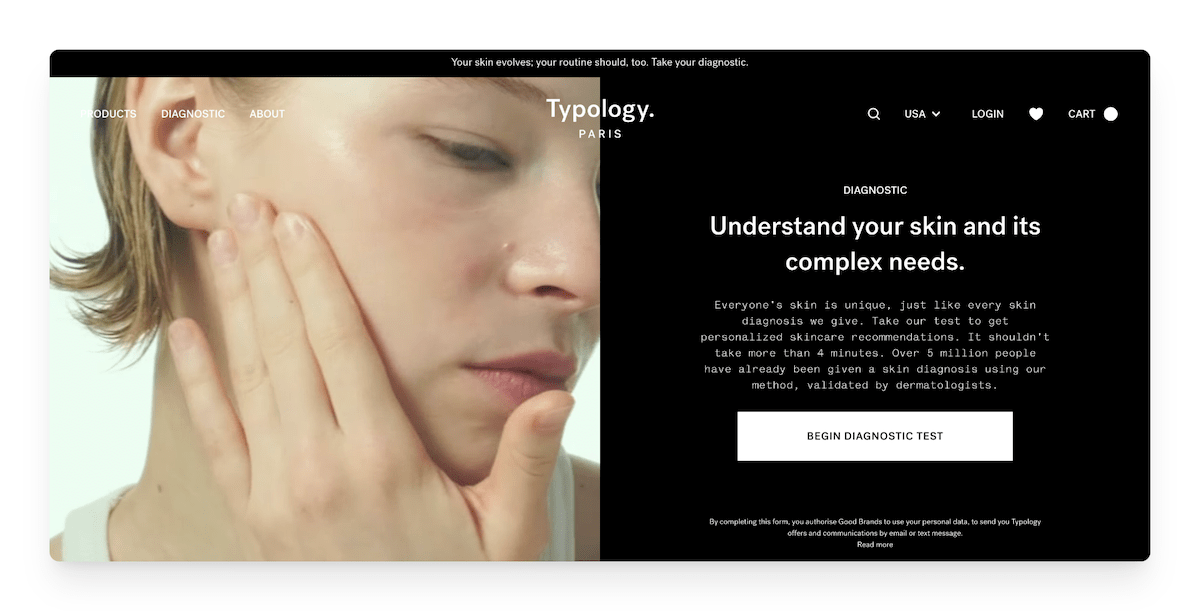
7. Ability for consumers to do everything from home
When shopping on a B2C ecommerce site, consumers don’t have to leave their homes to make purchases or try them on: everything comes to them with their preferred delivery and payment options (pickup at a collection point, installment payments, free returns, etc.).
Example: Amazon remains the ultimate example of the B2C internet commerce promise taken to the max: doing everything from home, effortlessly. With just a few clicks, you can order a vacuum cleaner, a book, or even your weekly groceries without leaving your home.
Express delivery within 24 hours, free returns, payment in installments, ultra-responsive customer service... Everything is designed to follow ecommerce trends in order to minimize friction and maximize convenience with purchases that arrive almost immediately at the location of your choice, optimizing purchasing experiences.
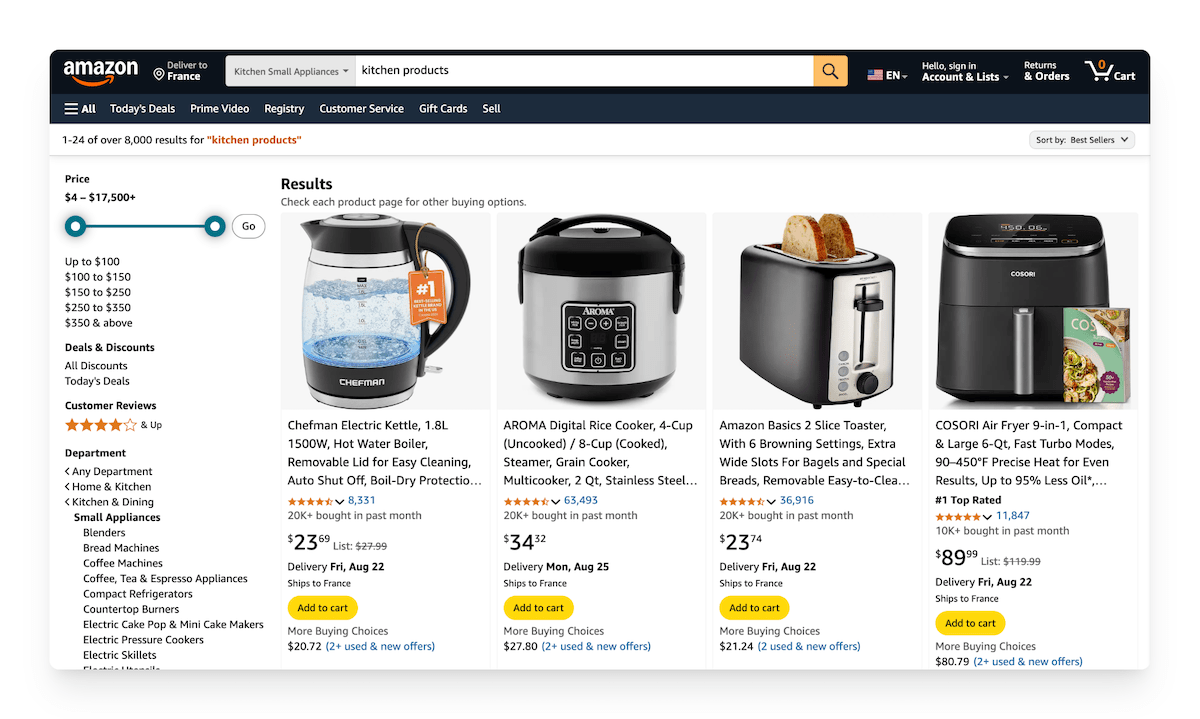
8. Promotion of brands that consumers wouldn’t have known about in physical stores
You’ve probably discovered a brand on social media, in an advertisement, or through word of mouth, and were curious enough to look it up online (even though it doesn’t exist in physical stores!).
Thanks to B2C ecommerce, there’s no need to physically search for the recommendation by traveling anywhere; everything is just a click away on your computer or smartphone.
Example: Back Market has become a leading pure player in the sale of refurbished electronic products by promoting a strong promise of sustainability and a shopping experience as smooth as buying a new product. The business imposes a quality charter on its sellers and provides after-sales service for buyers, which reassures consumers while promoting an ethical model.
It’s this ability to make refurbished products desirable, reliable, and accessible to the general public that is its strength, allowing it to attract targets who were not previously interested in this type of purchase thanks to its massive communication campaign and impeccable service.
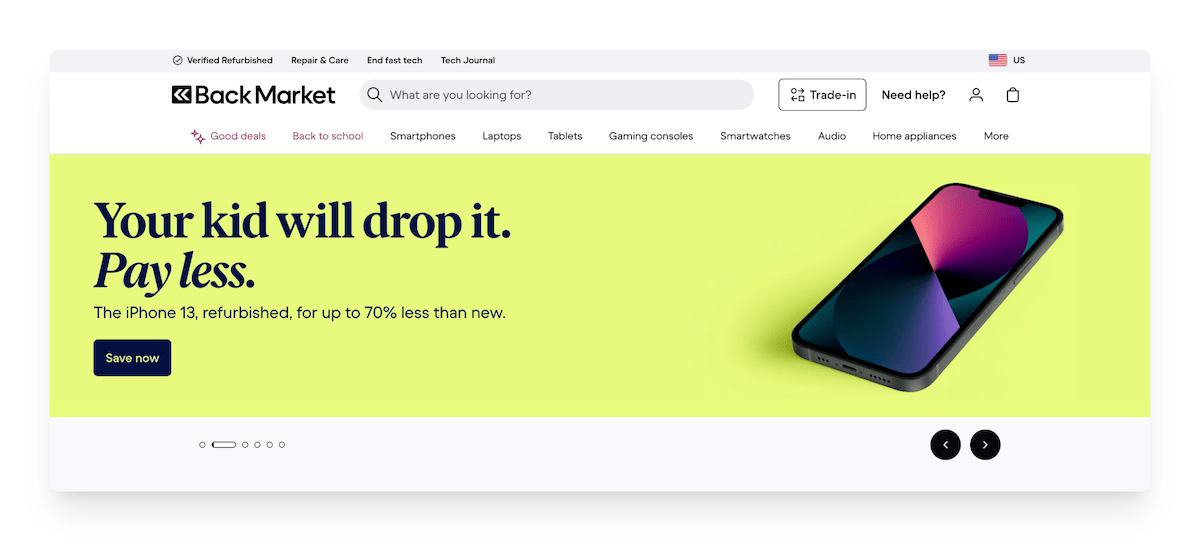
9. Ability to track customers anywhere, anytime
With B2C ecommerce, consumer desires and purchases are centralized in their customer accounts and always available at the click of a button.
This means that consumers can start browsing for an item online on their smartphone, place an order on their desktop computer, pick up their purchase in-store using click and collect, and make an appointment for additional services in-store from their app.
Example: Sephora is an example of a business that has perfectly merged the online and in-store experience. Thanks to its mobile app, personalized advice, and comprehensive loyalty program, the brand offers a shopping experience that allows customers to make purchases and book beauty appointments in-store from their screen or in-store. Its ability to combine digital, personalization, and a phygital approach makes it a B2C benchmark in the beauty industry.
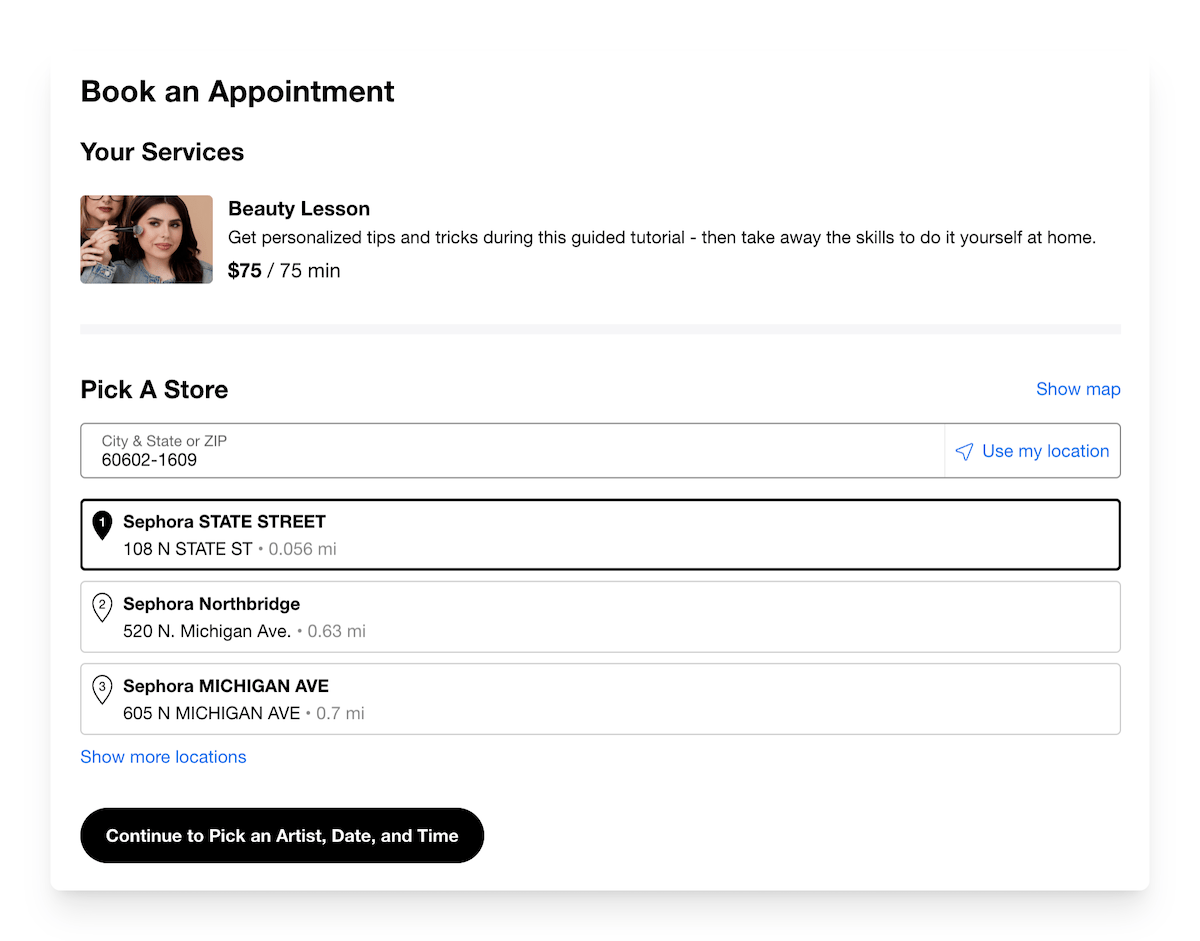
All these brands are proof: success in B2C isn’t just about having a good product to sell online; it’s about knowing how to tell a story, optimize each step of the customer journey, and build a true culture of customer satisfaction.
And above all, it’s about understanding that every click counts and that every interaction will have the potential to make a difference!


